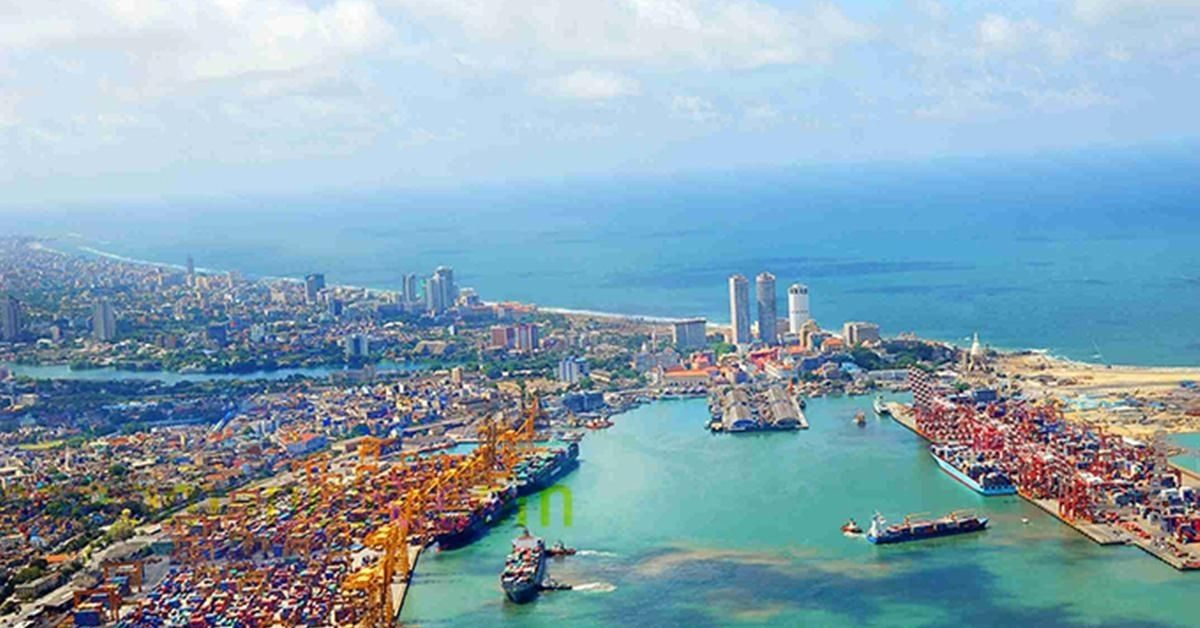The row has intensified and diplomatic relations have frayed ever since Sri Lanka unilaterally cancelled an agreement with India and Japan over the East Container Terminal (ECT) of Colombo port.
Now, a Sri Lankan minister has added a new twist to the controversy by claiming that the main Indian investor, the Adani Group, has itself indicated that it would be willing to put its money in the West Container Terminal (WCT), since it could be a better commercial prospect.
“We were on the verge of a national crisis because trade unions were threatening a national strike, if the Memorandum of Understanding (MoU) for the ECT is not cancelled,” said Nalaka Godahewa, state minister for urban development.
“We asked them (Adani Group and its local partner John Keells) for other options. They themselves asked us whether we could look at WCT, but, with the same equity ratio (85%:15%) that was given to China to develop the Colombo Cargo Container Terminal (CCIT) of the port. Commercially, it would be a better option, they said.”
The project came under opposition pressure in Sri Lanka ahead of the parliamentary polls in the country in July 2020. Sri Lanka had at the time assured India that New Delhi and Japan would get the go-ahead after the elections to develop the project, but it had to be “expedited” as it was crucial for all stakeholders.
Indian officials furious
Godahewa is also a member of Viyath Maga, which he describes as an “independent group” of professionals who supported powerful President Gotabaya Rajapaksa during his election campaign before coming to power in 2019.
Godahewa says he acted as an informal interlocutor for Rajapaksa to address swelling discontent amid port workers, influential Buddhist monks and various unions threatening to go on strike, if the President did not come good on a promise in his election manifesto, to cancel the deal with India and Japan.
“It was the previous government which had signed the MoU with India and Japan for the ECT,” points out Godahewa, who helped draft Rajapaksa’s manifesto. “In our manifesto, we promised voters that the ECT will be developed by Sri Lanka alone, and that the WCT will be given out on public-private partnership basis to foreign investors instead.”
It is that election promise, Godahewa claims, that the striking workers wanted President Rajapaksa to come good on.
However, Indian officials are furious and not buying that story.
“Have you noticed that most of these protesting groups — even the Buddhist clergy — are somehow affiliated to the Government of Sri Lanka itself? So, they are in no way a political opposition, as is being suggested,” said a high-ranking Indian official.
The official pointed out that after the MoU for the ECT was signed in May 2019, initial discussions had revolved around managing the ECT along the same equity divide (85%:15%) as China was given at the CCIT.
“Discussions picked up again last year. Then, protests began and there was suddenly the proposal that the Sri Lanka government retain 51% and offer only 49% to us foreign investors. We told them that the ECT would then become a state-run entity and turn private investors off. We also said that it is silly to have different templates for different terminals at the same port, so we suggested we keep talking.”
Though the pandemic caused a slight lull, negotiations commenced again in January this year, when India’s External Affairs Minister S. Jaishankar flew to Colombo.
“Things were making progress,” the official said. “Then suddenly on February 1, we heard that the Sri Lankan PM had called a meeting of trade union workers at his place. The same evening, a cabinet note was written and approved. So, within 2-3 days, Sri Lanka went from negotiations on the ECT to shifting the entire goalpost to another terminal altogether!”
Be it whichever terminal, Indians are riled by several issues and point to the “hypocrisy” of the claim that Sri Lanka’s sovereign interests alone are dictating these moves.
In addition to Colombo’s CCIT, China was also given controlling equity and a 99-year lease on the Hambantota port on the south-eastern coast of Sri Lanka, and also 15,000 acres of adjacent farmland to develop a Special Economic Zone (SEZ). The area saw relentless protests from local farmers. Yet, Sri Lanka did not renege on that deal.
“So the big question is, if that equity share was possible for China, why not with India and Japan over the ECT?” asks the Indian official.
Sri Lanka’s Godahewa, however, said it was only after the Adani Group itself gave his government the idea of the WCT in lieu of the ECT, that he went to talk to the 23 unions on strike.
“We were finally able to get their consent for a proposal, that India and Japan could be given the same terms as China at the CCIT, if they take the WCT in lieu. All except one gave their consent in writing, it was a breakthrough and the strike has been called off,” he said.
Source: The Print








